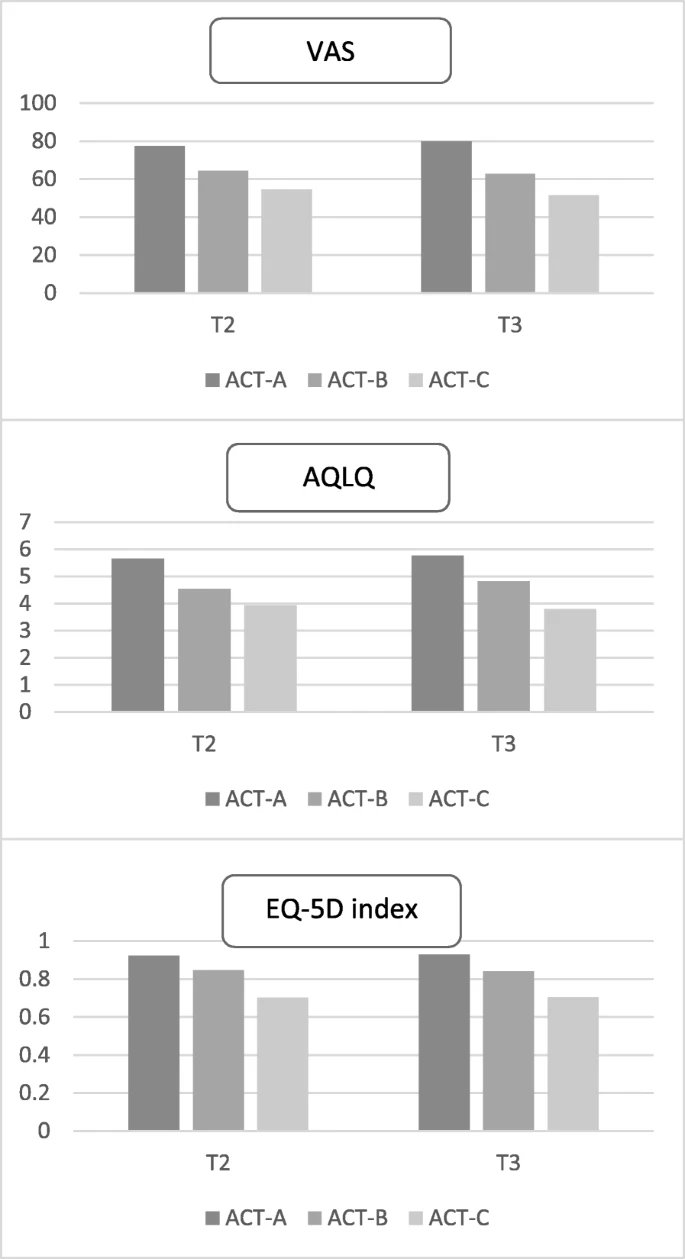Research article – Open Access
Boglárka L. Szentes, Konrad Schultz, Dennis Nowak, Michael Schuler & Larissa Schwarzkopf
BMC Pulmonary Medicine volume 20, Article number: 168 (2020)
Abstract
Background
Asthma patients experience impairments in health-related quality of life (HRQL). Interventions are available to improve HRQL. EQ-5D-5L is a common generic tool used to evaluate health interventions. However, there is debate over whether the use of this measure is adequate in asthma patients.
Methods
We used data from 371 asthma patients participating in a pulmonary rehabilitation (PR) program from the EPRA randomized controlled trial. We used four time points: T0 randomization, T1 start PR, T2 end PR, T3 3 months follow-up. We calculated floor and ceiling effects, intra-class correlation (ICC), Cohen’s d, and regression analysis to measure the sensitivity to changes of EQ-5D-5 L (EQ-5D index and Visual Analog Scale (VAS)) and the disease-specific Asthma Quality of Life Questionnaire (AQLQ). Furthermore, we estimated the minimally important difference (MID). Based on the Asthma Control Test (ACT) scores, we defined three groups: 1. ACT-A (ACT> 19) controlled asthma, 2. ACT-B (14 < ACT≤19) not well-controlled asthma, and 3. ACT-C (ACT≤14) very poorly controlled asthma.
Results

Only the EQ-5D index showed ceiling effects at T2 and T3 (32%). ICC (between T0 and T1) was moderate or good for all measures. Cohen’s d at T2 and T3 was better at differentiating between ACT-A and ACT-B than between ACT-B and ACT-C. The EQ-5D index showed moderate effect sizes (0.63–0.75), while AQLQ showed large effect sizes (0.74–1,48). VAS was responsive to pronounced positive and negative ACT changes in every period, and AQLQ mostly to the positive changes, whereas the EQ-5D index was less responsive. We estimated a MID of 0.08 for the EQ-5D index, 12.3 for VAS, and 0.65 for AQLQ.
Conclusion
All presented HRQL tools had good discriminatory power and good reliability. However, EQ-5D-5 L did not react very sensitively to small changes in asthma control. Therefore, we would suggest using supplementary measures in addition to EQ-5D-5 L to evaluate asthma-specific interventions more comprehensively.
